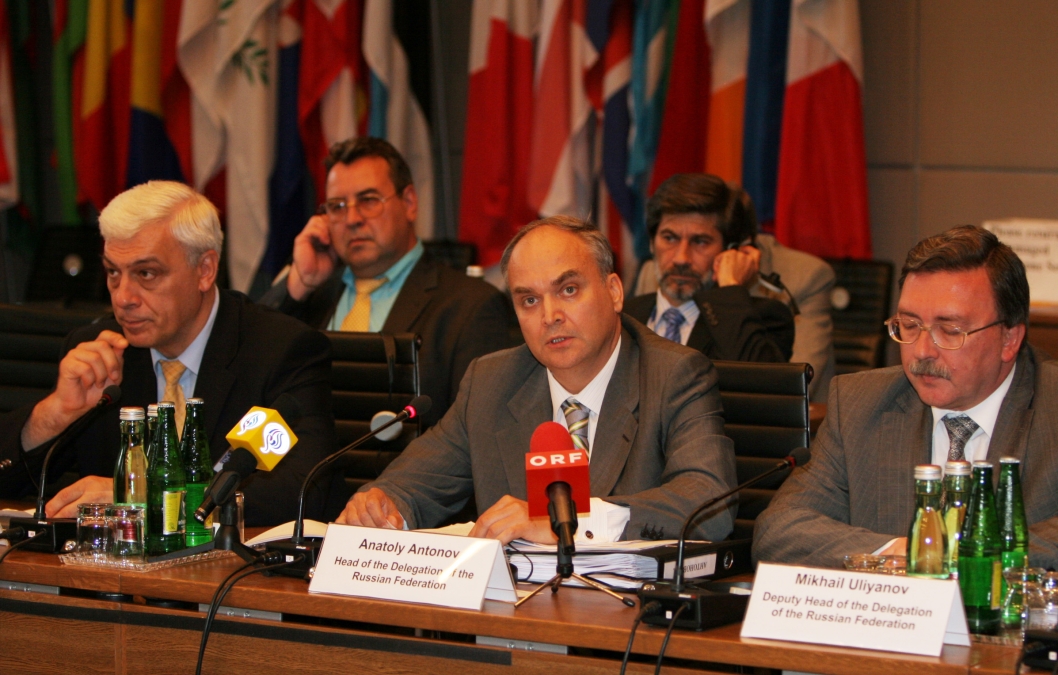The Russo-Ukrainian war Perspectives from military and security studies
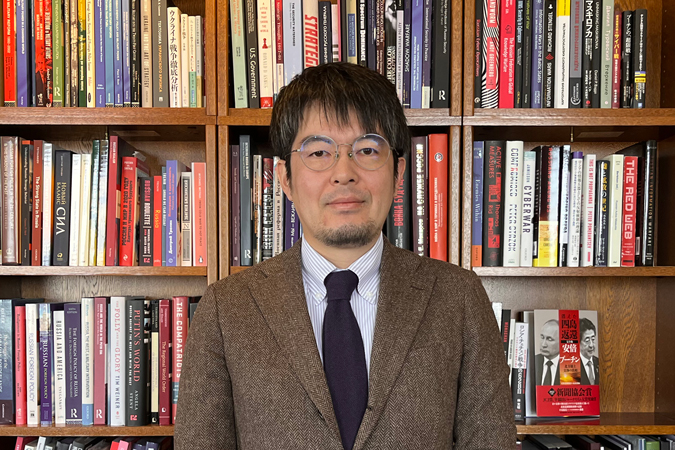
One year has passed since Russia’s invasion of Ukraine. Yu Koizumi, a lecturer in the University of Tokyo’s Research Center for Advanced Science and Technology, sheds light on the characteristics of this war and the nature of security going forward.
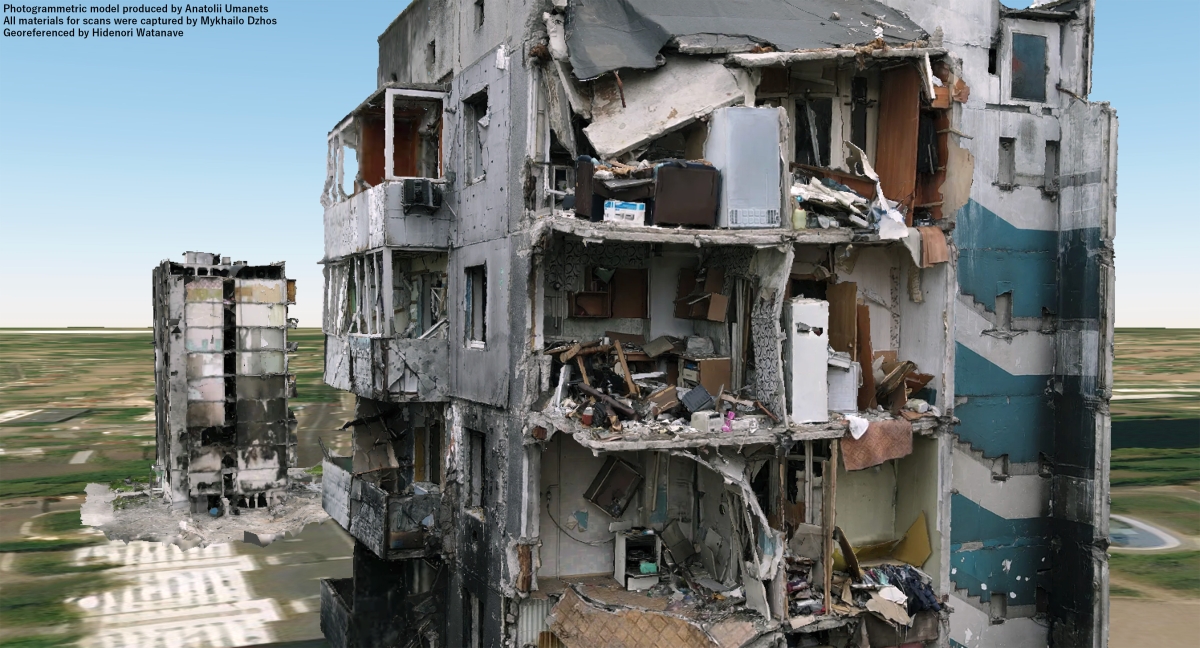
History’s revenge on the present
── What are some of the military characteristics of the war?
One major characteristic is the fact that two large nations are at war with full military force. Moreover, the Russian army has been engaging on full display from the beginning.
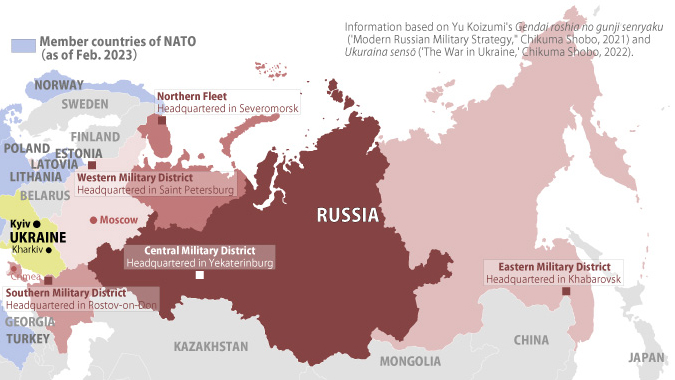
Russia, Ukraine, and surrounding nations
It was pointed out before the war began that the Russian military was beginning to move differently. This change was evident from satellite imagery, and by collecting and analyzing TikTok videos of tanks being transported by rail that were recorded by residents along the rail lines, it was possible to discern which units were moving when and where. As it turns out, troops from the Eastern Military District in the Far East and the Central Military District in Siberia were mobilizing in great numbers and assembling in far-off regions near Ukraine like Belarus. I have been observing large-scale Russian military exercises each year for about 15 years, but I have never seen such an extensive movement of military units. Russia gathered troops from throughout its vast territory and suddenly launched a full-scale invasion.
In response, Ukraine also mobilized its full army, and immediately after the war began issued a general mobilization order. The Ukrainian army is approximately 196,000 strong in peacetime, but for this war, they added the Territorial Defense Forces comprised of civilian volunteers, paramilitary groups, police, and foreign volunteers to their numbers. This allowed them to counter with a force of over 1,000,000. With this, Russia was no longer able to contend with only its initial force, so it scraped together the private military company Wagner, the Cossacks, and Chechen forces, and in September 2022, made the decision to partially mobilize 300,000 reserves.
As successor nations of the Soviet Union, military institutions and industries in Russia and Ukraine are integrated with society to a much higher degree than in Japan. In fact, since the collapse of the Soviet Union, Russia has consistently been involved in some kind of war, so society and the military are incredibly close. The same is true of Ukraine, which has been at war with Russia since 2014.
── One would think that we would not see interstate wars like this in the 21st century.
Before the war began, there was an assumption among NATO members that interstate wars were a thing of the past, and that Europe, in particular, was a place that had nothing to do with such things. However, this assumption was undermined right in front of us. I think it has been a great shock to the people of Europe.
The place names that have come up during this war are basically identical to those of World War II 80 years ago. For example, a place called Prokhorovka, which was a focus of the 1943 tank-fought Battle of Kursk that involved Germany and the Soviet Union, has once again made an appearance. The German heavy tanks from World War II and the main battle tanks used by Russia today are roughly the same weight, and because the places where tanks can move and resupply are limited, we see similar things happening in similar locations. It is as if events from 80 years ago are back to seek revenge.
This sense of revenge can also be felt in the behavior of Russian soldiers in the occupied territories of Ukraine. Modern Russian soldiers in the 2020s, not 100 or 200 years ago, are killing innocent people, committing sexual violence, and looting homes. Ultimately, though humanity has tried to learn from the war 80 years ago and keep them from happening, it has been unable to prevent them completely; once war breaks out, the way humans behave is largely unchanged. In that sense, I cannot say that we ever really overcame our past.
The unchanging essence of war
── How do you see the historical positioning of this war?
Within international relations theory of the early 2000s, there was a strong sense that the Cold War had ended and that the international order was entering a new stage. The economy, the environment, and human rights were taking on central importance in international relations, and there was enthusiastic discussion of how regional economic relations transcended national boundaries and how actors like giant corporations and NGOs were able to supersede diplomatic relations between nations. However, on the other hand, 19th century-style international order and the danger of large-scale interstate wars had not completely become a thing of the past. I feel that this war makes clear the fact that nation-states still remain at the center of international relations and that large-scale interstate wars are not inconceivable.
Of course, the characteristics of the components of warfare can change. Tanks that previously had a range of 500 meters are now able to fight at 2000 meters, and fighter planes that used to have a maximum speed of only 700km/h can now reach Mach 2.5. However, the fundamental nature of warfare, whereby one destroys their enemy’s forces on the field, occupies their land, and forces them to submit to their will, has not changed.
That said, the nature of warfare has undergone changes a number of times throughout history. Though it seems obvious now to completely destroy an enemy and subdue them, such a thing was not possible in pre-modern times. Because armies were the private property of monarchs, they could not afford to suffer heavy losses by waging all-out wars. Moreover, since industries and financial bases were fragile, it was difficult to mass-produce and provide equipment and other supplies. After all, people were not yet “citizens” of a given nation, so it would not occur to a person to voluntarily fight for one’s country. For this reason, wars were fought as a kind of ritual, with small-scale armies built up with money and used with care.
But, once Napoleon (1769-1821) takes the stage, this changes completely. Massive armies appeared that were composed of people with a sense that “citizens” = “nations,” and we entered a period in which large wars were fought with immense casualties. In other words, the emergence of nation-states and national armies through the French Revolution and the Napoleonic Wars, and the advent of modern industry that supported them, were major trends of the times that changed the nature of war itself.
Such changes have only occurred a handful of times in human history. The nature of war itself may change again in the future with the advancement of AI and other technologies, but for now, that remains in the realm of science fiction, and recent wars ultimately appear to be repetitions of what soldiers and spies have done in the past. In that respect, it is not as if the current war belongs to a different paradigm from that of World War II — I believe that this war has the same nature, albeit with different combat characteristics, and this is unlikely to change for the foreseeable future. We are still living in the shadow of a long modern era, and as long as we fight wars within that shadow, we can expect the same things to continue happening.
── What are some of the characteristics of Russia and Ukraine’s military capabilities?
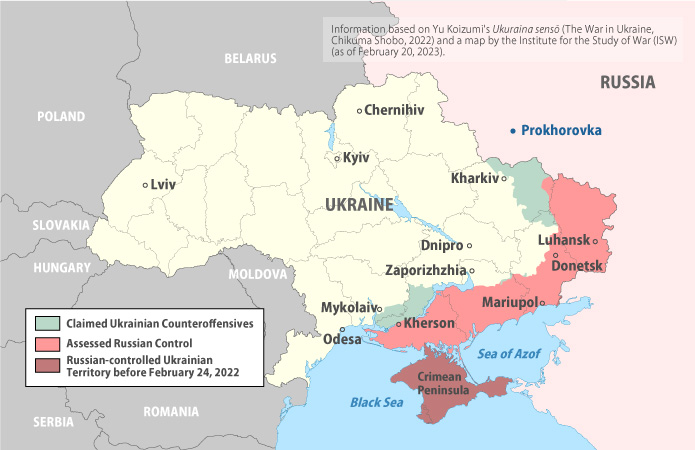
Map of Ukraine and frontlines of the war
I think that the current war is a highly interesting opportunity for rethinking Russia’s military strength. Until now, Russian military officials have been seriously considering how to stand against the U.S. military, and there is a sense that they could easily win against former Soviet republics like Ukraine and Georgia. Of course, Russia has an advantage in terms of conventional military strength, but recently there has been a flourishing argument that a combination of disinformation, terrorism, and limited air strikes can incite a civil war within an opponent’s country, allowing one to win without resorting to official warfare. These theories of unconventional warfare referred to as “new generation warfare” or “new type warfare” do not name former Soviet states as targets outright, but they emerged in the wake of the 2008 war with Georgia and the first invasion of Ukraine in 2014, so they give the strong impression of being strategies for intervention specifically in former Soviet states.
However, when the war actually began, Russia was unable to win. Ukraine did not give in during the disinformation and cyber campaigns, and when the full-scale armed invasion came, it continued to resist. This was an unexpected development for both the Russian military and for outside observers. Even Ukraine may not have expected that it would be able to do so much.
Ukraine’s ability to defend itself is thought to be largely due to the morale of its people, who were determined not to give in to Russia, as well as the fact that Ukraine had the military strength to fight on its own to some extent. The Ukrainian army held its ground for the first month with little military support and defended its capital Kyiv and the second largest city, Kharkiv. The West was initially indifferent, but because the Ukrainian army was holding its ground, at the end of March they decided to provide howitzers, armored vehicles, and air defense systems. Another significant factor was that President Zelensky did not flee, but instead remained with the nation. The fact that Ukraine’s leadership had the determination to resist completely and the communicative ability to convey that determination to its people played no small part.
Conversely, Russia has been unable to accept the reality that it is not as capable as it once thought. Nevertheless, it is still obsessed with the idea that force is necessary if Russia cannot impose the order it imagines, and as a result, Russia is strangling itself by trying to possess a disproportionate military to achieve those goals. Prior to the war, Russia’s defense spending had already reached approximately 3.8 trillion rubles, or 2.6% of the GDP and 15.1% of the federal budget, and this year, including supplemental spending, it is estimated to be more than 5 trillion rubles, or nearly 4% of the GDP.
Russia is a vast country with abundant natural resources and a highly educated elite. As long as it is not attempting to become an empire, it is a place where people can live reasonably happy lives. However, I suspect that Russia is harboring a contradiction in which it cannot tolerate the fact that it is not itself an empire. Once Russia is rid of this fantasy, I think we will finally be able to have a decent relationship with them, but how that will come about is a difficult question to answer.
The future of the “security dilemma”
── How can the balance of military power be maintained?
What kind of military power balance is considered comfortably “stable” depends entirely on one’s point of view, and one’s desire to achieve that stability can result in military expansion. One side using force may use only the minimum necessary amount, but the other party may find that amount unacceptable and respond with countermeasures. At which point, the side that first used force may feel insecure unless the second party, now their enemy, is eliminated, creating a spiral in which violence can escalate to a theoretical extreme. The unrestricted violence that would emerge through such an interaction was referred to as “absolute war” by the Prussian general Carl von Clausewitz (1780-1831).
The same dynamics are at work in an arms race, even if it may not lead to actual violence in a physical war. This is known as the “security dilemma,” and in order to avoid it, confidence-building measures are taken to increase mutual transparency of military capabilities. In Europe in the 1990s, the Treaty on Conventional Armed Forces in Europe (CFE) mandated limits to military strength, advance notification of any military exercises, and in the event that more than 13,000 are mobilized for an exercise, the invitation of observers from all member states of the Organization for Security and Cooperation in Europe (OSCE).
However, the current situation has made it clear that confidence-building does not work unless both sides are willing to cooperate in good faith. I think that one of the after-effects of this war will be a need to rethink the nature of security going forward.
── Why is the “security dilemma” becoming a reality?
In the 1990s, there was a sense that we were living with the fear that humanity might cease to exist as a result of nuclear war. However, the societal attitude after World War II was that wars like that would never happen again, and that though nuclear weapons existed, they would never be used, and I feel it is that assumption that made it permissible for nations like Russia and China to act in bad faith to an extent. There was also the argument that complex economic, social, and other interdependencies would make it difficult for nations to start wars as easily, but Russia and China instead used supply chains to bolster their own military power and embarked on a strategy of using such interdependencies as a weapon to bind the nations to the west.
As a result, we are now caught in a spiral of military expansion. The Baltic states and Poland bordering Russia had already been strengthening their militaries for some time, but even other NATO countries are debating raising their defense budgets to more than 2% of GDP. The way to stop this arms race will not come from military theory — that is the role of actual politics. However, we cannot rule out the possibility that in the end, nuclear weapons may be used in modern wars.
When considering the current war, I have the sense that what I thought was completely in the past has in fact never left us but only become harder to see. It’s not yet clear how this war will play out, but by focusing on the military, I believe that we can sound the alarm that humanity is currently in the midst of a crisis that we had thought to be long overcome, and that is an extremely dangerous place to be.
*Ukrainian names and places are represented according to their Ukrainian spellings.
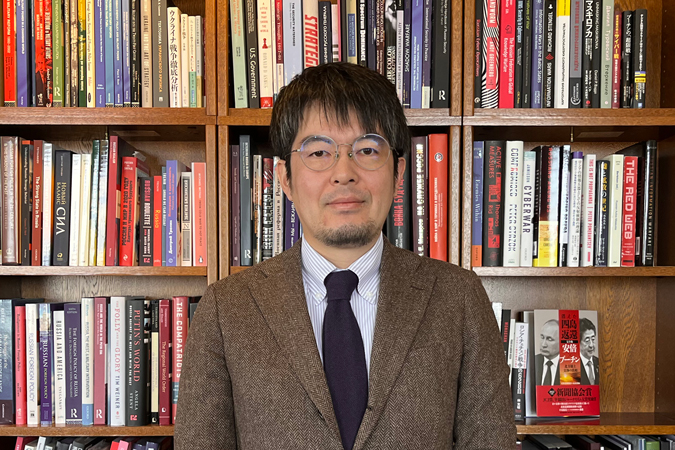
Yu Koizumi
Lecturer, Research Center for Advanced Science and Technology
M.A. (Political Science) from the Graduate School of Political Science, Waseda University. Assumed current role in 2022 after positions as an Analyst in the Intelligence and Analysis Service of the Ministry of Foreign Affairs, a Project Research Associate in the Research Center for Advanced Science and Technology, among others. Publications include Pūchin no kokka senryaku (“Putin’s National Strategy”) (Tokyodo Publishing, 2016), “Teikoku” roshia no chiseigaku (“The Geopolitics of Imperial Russia”) (Tokyodo Publishing, 2019), Gendai roshia no gunji senryaku (“Modern Russian Military Strategy”) (Chikuma Shobo, 2021), and Ukuraina sensō (“The War in Ukraine”) (Chikuma Shobo, 2022).
Interview date: January 10, 2023



